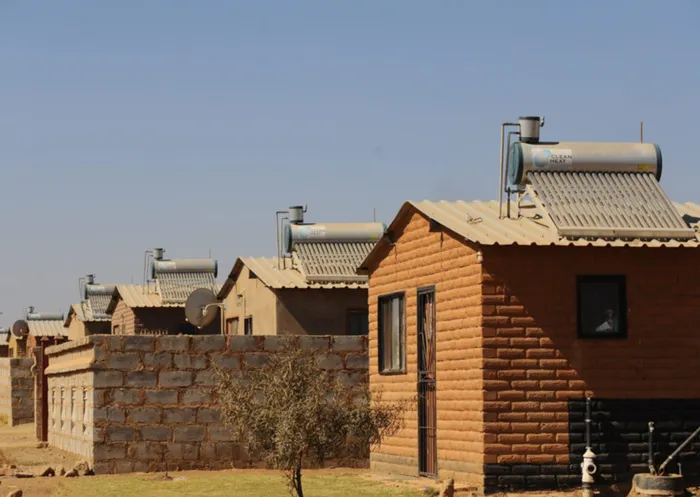Understanding the September surge in housing and utilities inflation in South Africa

Housing and utilities were the primary contributors to September's 3.4% annual inflation rate.
Image: Masi Losi/Independent Media
The housing and utilities inflation increased from 4.3% to 4.5%, thereby contributing 1.1 percentage points to overall inflation.
The Nedbank economics team says the rise was underpinned by higher actual rentals (3.2% from 3%) and owners' equivalent rent (3% from 2.5%), both of which were surveyed in September. Meanwhile, the year-on-year increase in electricity and other fuels moderated to 8.2% from 8.7%.
On Wednesday, the local data agency Statistics South Africa (Stats SA) reported that the annual consumer price inflation was 3.4% in September this year, up from 3.3% in August this year.
It says the CPI increased by 0.2% month-on-month in September.
“The main contributors to the 3.4% annual inflation rate were housing and utilities (4.5% and contributing 1.1percentage points) and food and non-alcoholic beverages (4.5% and contributing 0.8 of a percentage point).”
In an article about the "Top Challenges Facing South African Landlords in 2025", the Landlords Association of South Africa(LASA) said the country’s rental property sector stands at a critical crossroads in 2025.
It said the economic environment, legal reforms, shifting tenant expectations, and structural problems in service delivery all combine to create a landscape that is as complex as it is unpredictable.
The association said the rising cost of living in South Africa has put intense pressure on tenants. It said the higher fuel prices, increased food costs, and surging utility bills have reduced disposable incomes.
For landlords, this often translates to tenants falling behind on rent, negotiating partial payments, or even defaulting on their payments entirely, it added.
LASA said the tenants’ inability to keep up with escalating living costs impacts landlords’ cash flow and profitability, particularly those who rely on rental income to cover mortgage repayments or other property expenses.
It said the problem is particularly severe in middle-and lower-income markets, where tenants are especially price-sensitive.
LASA said municipal services remain inconsistent in many regions. Power outages, water interruptions, failing sewage systems, and uncollected refuse all degrade the quality of rental properties and tenant satisfaction.
It said because of these, landlords find themselves responsible for damage caused by these issues (for example, burst pipes from water pressure surges or electrical surges frying appliances), leading to increased maintenance costs.
Additionally, it said poor service delivery can drive tenants away from affected areas, suppressing demand and rental yields.
With regard to the rising utility costs, the organisation says municipalities and Eskom have implemented tariff hikes well above inflation in many cases. It said landlords who include utilities in rent see their margins squeezed. At the same time, those who exclude them face tenant pushback over unaffordable bills.
In sectional title schemes, levies often rise significantly to cover bulk utility increases and maintenance backlogs, making these properties less attractive to tenants, according to LASA.
In a recent blog, EcoFlow, a home backup & off-grid solar power solutions provider, said living in South Africa is more affordable than in many other countries, with living costs and rent typically 50% or more cheaper than in most countries. However, it added that wages can also be low.
The monthly cost for a family of four in South Africa is estimated to be R37,302.8R, but this number varies between cities.
In Johannesburg, it said the estimated monthly costs (food, utilities, transportation, etc.) for a family of four are R41,316.7 plus anywhere from R11,565.17 to R13,369.57 to rent a three-bedroom apartment, depending on the apartment and whether it’s located inside or outside of the city centre.
A single person in Johannesburg has an estimated monthly cost of living of R11,878.8 plus R6,079.38 to R7,324.00 for a one-bedroom apartment.
Cape Town is said to be the most expensive city to live in, compared to Johannesburg, where the cost of living is slightly lower, but rent is higher. A family of four pays about R38,128.3 for general living expenses plus R15,921.88 to R25,129.03 for a three-bedroom apartment.
A single person has an estimated monthly cost of R10,877.4 plus R8,002.94 to R12,054.05 for a one-bedroom apartment.
Pretoria was described as a more affordable option where a family of four can expect to pay about R37,312.0 for general living expenses plus R11,650.00 to R12,315.79 for a three-bedroom apartment. The cheapest places are inside the city centre, unlike most cities.
The estimated monthly living costs for a single person in Pretoria are R10,770.40 plus R6,064.71 to R7,111.11, with the higher costs for those inside the city centre.
Living expenses in Durban are lower than in the other three cities we examined. A family of four's estimated monthly living costs are R35,035.9 plus R11,000.00 to R11,944.44 for a three-bedroom apartment.
A single person in Durban can expect to pay R10,421.7 for living expenses plus R5,682.35 to R6,250.00 for a one-bedroom apartment.
EcoFlow said rent is always the largest monthly expense. But overall, rent in South Africa is about 65% lower than in the United Kingdom, 74% lower than in the USA, and 55% lower than in Germany.
Related Topics: